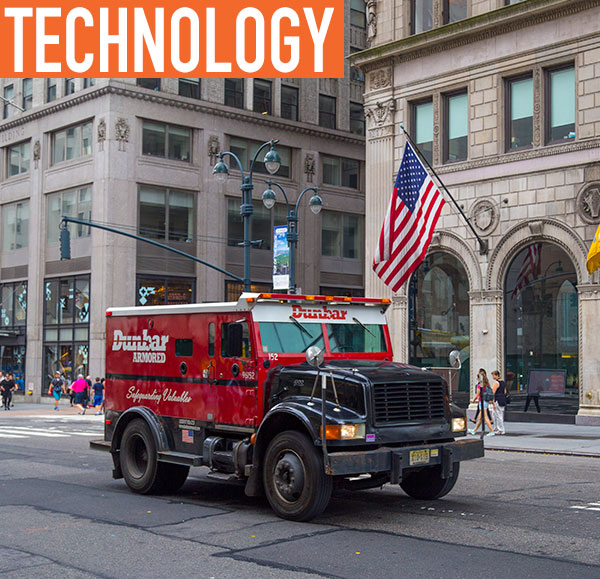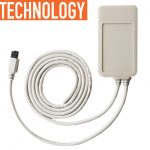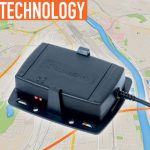In tough economic environments, the natural inclination of most companies is to cut costs, including strategic long-term investments. The bottom line is that profitability must be preserved at all costs and tactical considerations become more important. For organizations with large fleets, however, they must consider more than profitability. The larger issue of driver behavior and safety must be considered when evaluating critical potential investments.
Fortunately, the market has learned that safety, efficiency, and financial performance are inextricably linked and implementing fleet management solutions can help drive an ideal result for any organization with large fleets in industries ranging from waste management and pickup and delivery to utilities to government.
There are several aspects that health, safety, and environmental managers can and should be focused on to ensure safety of their fleets and, as you will see, the improvements in safety and efficiency all improve profitability.
FLEET MANAGEMENT SOFTWARE
Currently implemented in about one quarter of US fleets, fleet management software helps reduce costs, increase safety, and manage efficiency. It does this through tracking vehicles and driver behavior, live information streams, and reporting tools. Fleet management software requires a companion hardware component, the In-Vehicle Monitoring System (IVMS), which gathers data from the vehicle and driver.
What kind of data does fleet management software track and leverage? Typically, a real-time view of the current position of all fleet assets, including whether an asset is moving or stationary and which driver is driving which vehicle. When it comes to the driver, fleet management software also tracks speed, driving direction, ignition status, harsh braking, other driving violations, and a trail of where the asset has been. This data helps managers track and improve safety and overall fleet performance.
IVMS
IMVS, also known as an Electronic On-Board Recorder (EOBR) or Electronic Logging Device (ELD), is a piece of hardware installed in the cab of each vehicle and used to collect data used by fleet management software. IVMSs can be extended with a touchscreen device for drivers that can be used for a wide range of functions, including ELD hours of service, navigation, and in-cab driver coaching with audible and visual alerts. Fleets that integrate their fleet management solutions with back-office systems can also use in-cab touchscreens for order management, delivery status, and even invoicing.
Alerting is a key safety feature for IVMSs. Examples include warning drivers when they are going too fast or in danger of rollover and alerting drivers to route changes and extreme weather. They also help decrease driver use of phones while driving.
The FMCSA is requiring US fleets to implement ELDs by December 2017—read more about the ELD Mandate at explore.mixtelematics.com/eld.
RISK PROFILE RANKING OF DRIVERS
Most fleet management software platforms now enable fleets to create risk profile rankings of drivers based on past driver behavior. Drivers that fall below a certain ranking can be taken aside for additional safety training and repeat offenders can be taken off the road entirely. Most reports take the form of report cards, where drivers are graded in several areas, including speeding, harsh braking, and off-route driving. In addition, some platforms offer driver apps, which provide individual drivers with their scores and comparisons to their peer group. This helps boost good driver behavior and safety.
IN-CAB VIDEO
In-cab video monitoring solutions typically feature both forward- and cab-facing cameras that capture video footage and sound, allowing for visual acuity at the time of an event. Most systems capture a short video clip, several seconds in length, showing what was happening outside and inside the cab when a driving event is triggered. Others add up to 72 hours of rolling video that can be helpful even when an event is not triggered. Driving events are configurable and typically include the following driver behaviors: corner handling, speeding, and harsh acceleration and deceleration. Video is very useful when evidence is needed for settling or defending a claim associated with a crash and for general training and safety assurance.

DRIVER SAFETY TRAINING
Driver safety training should be a continuous and proactive process. Ongoing consultancy, training, and monitoring are essential for the effective management of your drivers’ safety. Unfortunately, many fleets ignore driver training or perform only cursory minimal training until after a major incident occurs.
Done well, driver training should incorporate several key aspects: identifying safety risks, assessing the likelihood of those risks, and educating drivers on avoiding them. Problems areas can be addressed through competency-based training (both in person and online), ongoing monitoring through a driver-behavior monitoring system, and reporting on potential risks. Specific tools that fleet managers can employ include driver training courses, seminars, and e-learning platforms.
Driver training programs should be viewed as part of a holistic approach, combined with the elements above. Executed properly, driver-training programs have been proven to bring measurable improvements in driver behavior and reduced fatalities.
IMPACT ON THE BOTTOM LINE
While safety tends to be a main driver for fleets, investing in these technology areas, in the current economic climate, fleet managers need to understand that efficiency gains are a significant benefit, as well. Fleets that invest in these five areas:
- Reduce their fuel costs by 10 percent on average, often equating to a payback of millions of dollars
- Better manage routes and delivery schedules and improve vehicle utilization
Identify, monitor, and manage poor driver behavior, reducing crash rates by 25 to 50 percent - Efficiently manage servicing and licensing, resulting in reduced wear and tear and increased vehicle uptime
- Reduce carbon emissions, helping to create a healthier, more sustainable environment
- Improve regulatory compliance, reducing or eliminating fines
A recent data analysis performed by MiX Telematics showed that fleets can expect to save $50 to $100 per month, per vehicle from using fleet management technologies. If safety improvements aren’t enough to inspire you to explore these technologies, maybe efficiency and profitability gains will be.
ABOUT THE AUTHOR:
Pete Allen is the executive VP at MiX Telematics. Find out more about fleet management software, visit www.mixtelematics.com.
_______________________________________________________________________
MODERN WORKTRUCK SOLUTIONS: JULY 2016 ISSUE
Did you enjoy this article?
Subscribe to the FREE Digital Edition of Modern WorkTruck Solutions magazine.
![]()




